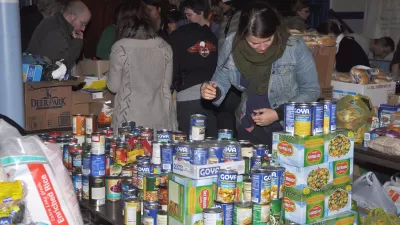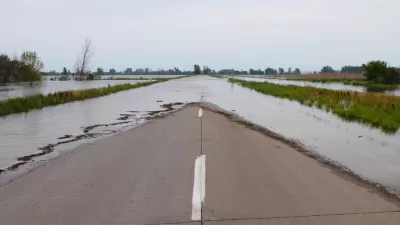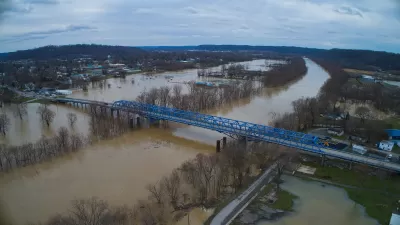In blacked-out Manhattan, recovery is slow, if not entirely absent. To help fill the void left by public agencies, a self-organized recovery effort is trying to help those left behind, with the assistance of technology.
Anya Kamenetz reports on the increasingly desperate situation in New York's high-rise public housing buildings, where residents that couldn't evacuate before the storm had been without power or water since Monday night. At a building on Mahnattan's Lower East Side she joined a group of volunteers who had seen "a notice on a website,
got an email, or saw a Tweet that volunteers were needed at 46 Hester
Street on the Lower East Side, where a local Asian community
organization called CAAAV has become the hub for an almost completely self-organized aid effort."
"On each floor above the fourth we find elderly and sick people who have
been unable or afraid to venture out since the start of the storm," says Kamenetz. "'I've
fallen down twice--that was enough for me,'" says Estelle Kleinhaus, a
white-haired woman on the 12th floor who lives alone. They need food,
drinking water, and medication. More able-bodied residents have been
filling buckets at a hydrant outside in order to flush toilets."
"The lack of an official, coordinated door-to-door response here in
downtown, close to some of the most affluent neighborhoods in the
country, is a bit chilling...If you were going to target people most likely
to need help when the power and water is out, it would be the elderly
residents of high-rise towers like the ones that surround us."
FULL STORY: What’s Really Happening In Blacked-Out Manhattan

Alabama: Trump Terminates Settlements for Black Communities Harmed By Raw Sewage
Trump deemed the landmark civil rights agreement “illegal DEI and environmental justice policy.”

Planetizen Federal Action Tracker
A weekly monitor of how Trump’s orders and actions are impacting planners and planning in America.

How Atlanta Built 7,000 Housing Units in 3 Years
The city’s comprehensive, neighborhood-focused housing strategy focuses on identifying properties and land that can be repurposed for housing and encouraging development in underserved neighborhoods.

In Both Crashes and Crime, Public Transportation is Far Safer than Driving
Contrary to popular assumptions, public transportation has far lower crash and crime rates than automobile travel. For safer communities, improve and encourage transit travel.

Report: Zoning Reforms Should Complement Nashville’s Ambitious Transit Plan
Without reform, restrictive zoning codes will limit the impact of the city’s planned transit expansion and could exclude some of the residents who depend on transit the most.

Judge Orders Release of Frozen IRA, IIJA Funding
The decision is a victory for environmental groups who charged that freezing funds for critical infrastructure and disaster response programs caused “real and irreparable harm” to communities.
Urban Design for Planners 1: Software Tools
This six-course series explores essential urban design concepts using open source software and equips planners with the tools they need to participate fully in the urban design process.
Planning for Universal Design
Learn the tools for implementing Universal Design in planning regulations.
Jessamine County Fiscal Court
Caltrans
Institute for Housing and Urban Development Studies (IHS)
City of Grandview
Harvard GSD Executive Education
Toledo-Lucas County Plan Commissions
Salt Lake City
NYU Wagner Graduate School of Public Service





























